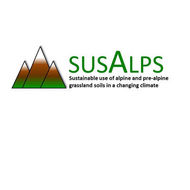The potential bias of nitrogen deposition effects on primary productivity and biodiversity (2023.0)
Ke Y., Yu Q., Wang H., Zhao Y., Jia X., Yang Y., Zhang Y., Zhou W., Wu H., Xu C., Sun T., Gao Y., Jentsch A., He N., Yu G.
Global Change Biology, 29 (4), 1054-1061
Abstract
AbstractAtmospheric nitrogen (N) deposition is composed of both inorganic nitrogen (IN) and organic nitrogen (ON), and these sources of N may exhibit different impacts on ecosystems. However, our understanding of the impacts of N deposition is largely based on experimental gradients of INs or more rarely ONs. Thus, the effects of N deposition on ecosystem productivity and biodiversity may be biased. We explored the differential impacts of N addition with different IN:ON ratios (0:10, 3:7, 5:5, 7:3, and 10:0) on aboveground net primary productivity (ANPP) of plant community and plant diversity in a typical temperate grassland with a long‐term N addition experiment. Soil pH, litter biomass, soil IN concentration, and light penetration were measured to examine the potential mechanisms underlying species loss with N addition. Our results showed that N addition significantly increased plant community ANPP by 68.33%–105.50% and reduced species richness by 16.20%–37.99%. The IN:ON ratios showed no significant effects on plant community ANPP. However, IN‐induced species richness loss was about 2.34 times of ON‐induced richness loss. Soil pH was positively related to species richness, and they exhibited very similar response patterns to IN:ON ratios. It implies that soil acidification accounts for the different magnitudes of species loss with IN and ON additions. Overall, our study suggests that it might be reasonable to evaluate the effects of N deposition on plant community ANPP with either IN or ON addition. However, the evaluation of N deposition on biodiversity might be overestimated if only IN is added or underestimated if only ON is added.